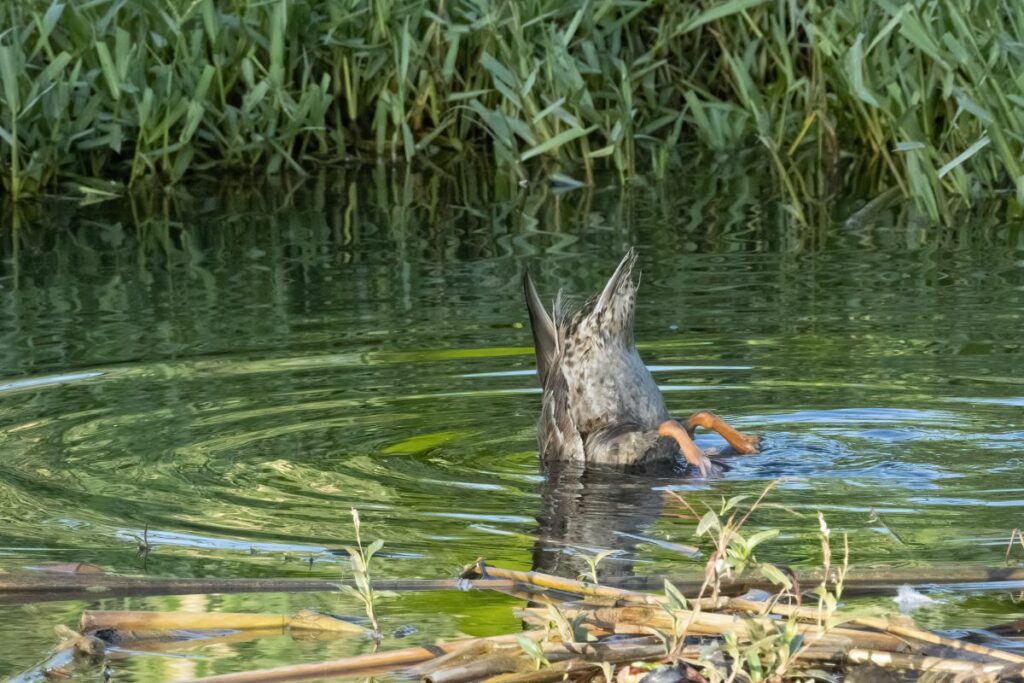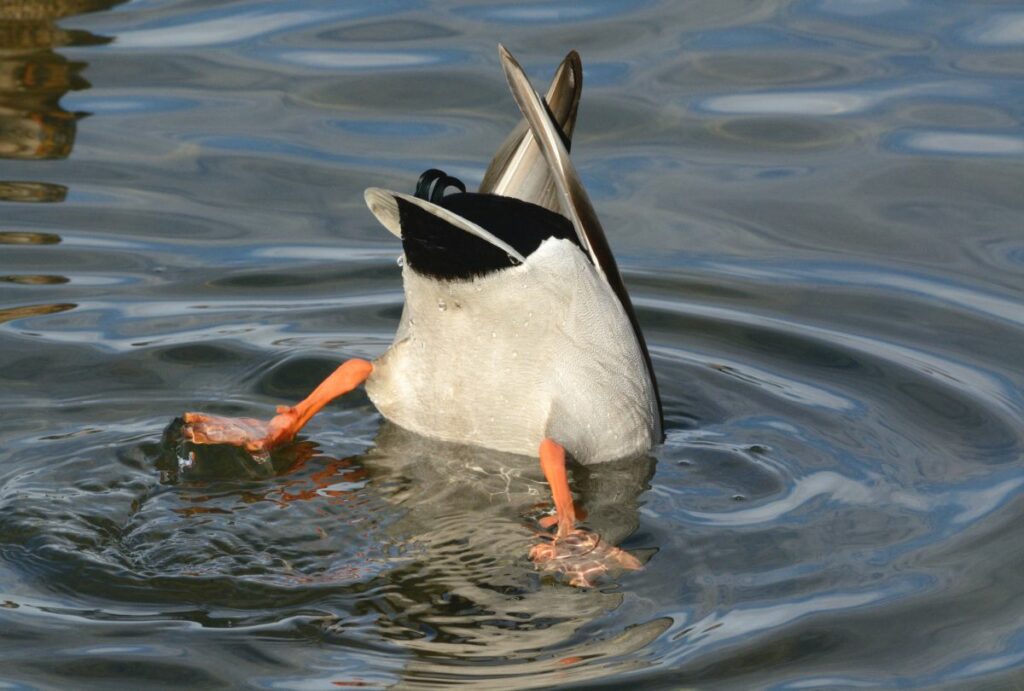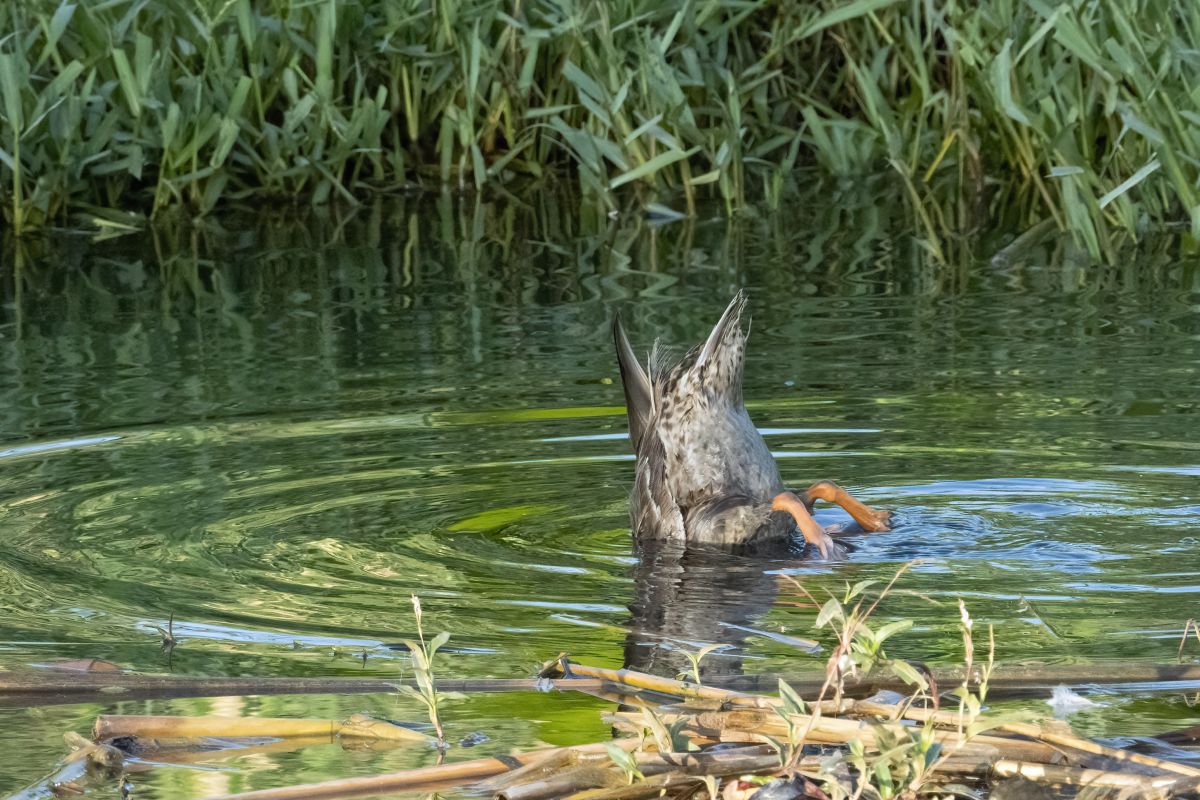There are over 150 species of ducks, so there are several ways that researchers categorize those species. “Dabbling duck” is the most common category of duck, including a variety of wild ducks and ducks that can be domesticated.
So, what is dabbling and what types of ducks fall into that category?
What is a Dabbling Duck?
Most duck species are classified as dabbling or diving ducks. “Dabbling” refers to ducks that primarily feed on the water’s surface, and they sometimes graze on land. It’s common to see dabbling ducks stick their heads under the water while their lower halves still float on the surface.
Dabbling ducks do not swim underwater, so they’re normally seen near shallow bodies of water such as ponds, estuaries, swamps, marshes, and flooded fields.
How to Identify a Dabbling Duck
Each dabbling duck species has a unique appearance, but many have consistent qualities. Most dabbling ducks are sexually dimorphic, meaning the females and males have obvious physical differences.
Male dabbling ducks are usually vibrant and colorful while females usually have dull feathers. The bright colors of males help them attract mates while the dark colors of females help them hide.
Of course, you can also identify a dabbling duck based on their behavior. If you see ducks feeding as they float on the water without diving completely underwater, they’re probably dabblers.
Dabbling ducks usually have long, round-shaped bills to help them filter out food when dabbling. Their legs are located close to the center of their body to make walking on land easier. Their feet are often smaller than diving ducks since they don’t need to be strong underwater swimmers.
How Do Dabbling Ducks Feed?
Dabbling ducks get their name because they “dabble” during feeding time. “Dabbling” means to move around gently in shallow water, which often stirs up the substrate and makes it easier to find plants and invertebrates.
There are three main ways that dabbling ducks feed: surface feeding, tipping upside down, and foraging.

Surface Feeding
When dabbling ducks feed in the water, they only seek out food that’s close to the surface. To do that, they will skim their beaks along the water while they float. They will usually sweep their heads back and forth while they appear to be “nibbling” at the water. Those movements help them cover as much surface area as possible.
During surface feeding, dabbling ducks look for a variety of food types. Most dabbling ducks feed on aquatic insects, algae, and other aquatic plants and invertebrates. Their flat, broad bills make this feeding method efficient. Birds with narrow bills wouldn’t catch as much food if they tried to dabble.
Other types of ducks may engage in surface feeding, but they might not rely on it as much as dabbling ducks do.
Tipping Upside Down
During surface feeding, some ducks also tip upside down to get access to more food. They will stick the upper half of their body underwater while their butt remains afloat.
While their head is underwater, they can extend their neck to nibble on more substances hiding among the algae and substrate. Diving ducks usually go completely underwater to reach deeper food, so that’s a big difference between the feeding habits of the two types.
When dabbling ducks tip upside down, they spread their feed or wag their feet and tail to stay balanced. Once they’re done feeding underwater, they lift their heads out of the water and continue to float.
Foraging
Dabbling ducks get most of their diets from the water, but many also forage on land. When foraging, they will explore the land and nibble the ground with their beaks, similar to how they surface feed.
On land, dabbling ducks often seek out seeds, grains, nuts, and insects, but they’re not too picky. Most duck species forage on land to some extent, but dabblers forage more than divers.
Species of Dabbling Ducks
There are at least 38 species of dabbling ducks, but some sources state that there may be as many as 50 or 60 species that can fall into that category.

These species are usually seen floating on the water or hanging out near the water. They can take off into flight directly from the water instead of getting a running start on land. They’re great at flying and can travel long distances if needed.
They’re vocal birds because they often gather in groups and dabble near each other. Females make traditional quacking sounds while males are more likely to whistle, squeak, and honk.
Here are some examples of dabbling duck species:
- American Black Duck
- American Wigeon
- Blue-Winged Teal
- Cinnamon Teal
- Eurasian Wigeon
- Gadwall
- Green-Winged Teal
- Mallard
- Mottled Duck
- Northern Pintail
- Northern Shoveler
- Wood Duck
Any duck species that regularly dabbles could be categorized as a dabbling duck. Ducks who dabble often usually share all the characteristics mentioned earlier.
Frequently Asked Questions
Here are some related questions people commonly wonder.
Yes, some dabbling ducks, such as mallards, can be kept in captivity. However, most dabbling duck species are strictly wild ducks and cannot legally be raised as livestock or pets.
Yes, dabbling ducks are great fliers, so they migrate. Most dabbling ducks migrate to somewhere warmer in the late fall and return in spring.
Yes, many diving ducks also dabble on occasion. The main difference is that diving is the main feeding method for diving ducks while dabbling ducks rely more on dabbling. The habits aren’t always exclusive to one type of duck.
Dabbling ducks always float on water because they’re less dense than the water, thanks to their feathers. They also don’t sink in mud because of their webbed feet.
Conclusion
Dabbling ducks are the most common category of ducks, but most of them are wild ducks that can’t be kept as livestock or pets. However, learning about the behaviors of this duck type can help you understand ducks in general. So, learning as much as you can about ducks may improve your duck keeping abilities.
Next time you see a wild duck, try to figure out if it’s a dabbling duck. If it’s skimming the water’s surface or only dipping its head in, then it’s probably a dabbler.
